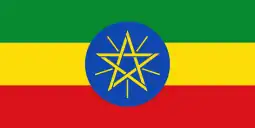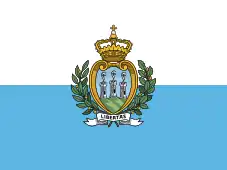National academy
A national academy is an organizational body, usually operating with state financial support and approval, that co-ordinates scholarly research activities and standards for academic disciplines, and serve as public policy advisors, research institutes, think tanks, and public administration consultants for governments or on issues of public importance, most frequently in the sciences but also in the humanities. Typically the country's learned societies in individual disciplines will liaise with or be coordinated by the national academy. National academies play an important organisational role in academic exchanges and collaborations between countries.
The extent of official recognition of national academies varies between countries. In some cases they are explicitly or de facto an arm of government; in others, as in the United Kingdom, they are voluntary, non-profit bodies with which the government has agreed to negotiate, and which may receive government financial support while retaining substantial independence. In some countries, a single academy covers all disciplines. In others, there are several academies, which work together more or less closely; for example, France, where the Institut de France groups five self-governing Academies, or Australia. In many states, they are organized in academies of science. In the countries of the former Soviet Union, and in the People's Republic of China, the national academies have considerable power over policy and personnel in their areas. There is, however, a growing consensus among international federations of learned academies that bona fide national (or learned) academies need to adhere to certain criteria:
- The fellowship is elected, on the basis of excellence, by existing fellows (members)
- The number of fellows is restricted either to a total number or to a rate of accretion
- The governance of the academy is democratic and "bottom up". The fellowship is the ultimate source of the academy's authority
- The academy is independent of government, industry and professional associations. Most, if not all, academies derive some financial support from some or all of these other organisations but this support needs to be given in a manner that does not compromise the academy's independence.
United States
In 1863, President of the United States Abraham Lincoln incorporated the United States National Academies of Sciences, Engineering, and Medicine (NASEM). The affiliated organizations were granted congressional charters to operate under the National Academy of Sciences. In 1916 President Woodrow Wilson reincorporated the organization under the National Research Council to foster scientific research emphasizing American industries. Today NASEM is composed of three non-profit member organizations: the National Academy of Sciences (NAS), the National Academy of Engineering (NAE), and the National Academy of Medicine (NAM) (after 2015; formerly Institute of Medicine (IoM)). The U.S. national academies also serve as public policy advisors, research institutes, think tanks, and public administration consultants on issues of public importance or on request by the government.[1][2][3]
| Name | Year founded | Area of focus | President | Notes |
|---|---|---|---|---|
| National Academy of Sciences | 1863 | Science | Marcia McNutt | |
| National Academy of Engineering | 1964 | Engineering | John L. Anderson | |
| National Academy of Medicine | 1970 | Medicine | Victor Dzau | Established as the Institute of Medicine (1970–2015) |
United Kingdom
In the United Kingdom four national academies are the major learned societies of England: the Academy of Medical Sciences, British Academy, the Royal Academy of Engineering and the Royal Society.[4] In addition, there are the Learned Society of Wales in Wales and the Royal Society of Edinburgh in Scotland. The UK Young Academy is for young scientists.
| Name | Country | Year founded | Area of focus | Patron or President | Notes |
|---|---|---|---|---|---|
| Royal Society | England | 1660 | Hard sciences, soft sciences | Charles III[5] | The Invisible College was a precursor to the Royal Society of London. In 1660, the informal committee of 12 philosophers formed the College for the Promoting of Physico-Mathematical Experimental Learning. |
| Royal Society of Edinburgh | Scotland | 1783 | Hard sciences, soft sciences, arts, humanities, medicine, social sciences | Professor Dame Anne Glover as President | The Royal Society was founded during the Scottish Enlightenment as the Edinburgh Society for Improving Arts and Sciences. |
| British Academy | England | 1902 | Humanities and social sciences | Sir David Cannadine as President | The British Academy was first proposed in 1899 as the British Academy for the Promotion of Historical, Philosophical and Philological Studies. The name was subsequently shortened and incorporated in 1901, receiving royal charter from King Edward VII in 1902. |
| Royal Academy of Engineering | England | 1976 | Engineering | Prince Philip, Duke of Edinburgh was Senior Fellow until his death[6] Anne, Princess Royal and Prince Edward, Duke of Kent as Royal Fellows[7] |
The Fellowship of Engineering was conceived in the late 1960s under Harold Wilson, and subsequently established in 1976. It was granted royal charter in 1983 and renamed the Royal Academy of Engineering in 1992. |
| Academy of Medical Sciences | England | 1998 | Biomedical and health research | Professor Dame Anne Johnson as President | The academy was established by a working group chaired by Michael Atiyah. |
| Learned Society of Wales | Wales | 2010 | Hard sciences, soft sciences, arts, humanities, medicine, social sciences | Sir Emyr Jones Parry as President; Charles, Prince of Wales as Patron |
|
| UK Young Academy | United Kingdom & Ireland | 2022 | Young scientists | The academy was established by seven UK/Irish academies. |
List
 Albania: Academy of Sciences of Albania
Albania: Academy of Sciences of Albania Armenia: Armenian National Academy of Sciences
Armenia: Armenian National Academy of Sciences.svg.png.webp) Australia: Australian Academy of Science, Australian Academy of Technological Sciences and Engineering, Australian Academy of the Humanities, Academy of the Social Sciences in Australia, National Academies Forum
Australia: Australian Academy of Science, Australian Academy of Technological Sciences and Engineering, Australian Academy of the Humanities, Academy of the Social Sciences in Australia, National Academies Forum Austria: Austrian Academy of Sciences
Austria: Austrian Academy of Sciences Belarus: National Academy of Sciences of Belarus
Belarus: National Academy of Sciences of Belarus.svg.png.webp) Belgium: Royal Academy of French Language and Literature of Belgium, Royal Academy of Dutch Language and Literature; see also Academies of Belgium
Belgium: Royal Academy of French Language and Literature of Belgium, Royal Academy of Dutch Language and Literature; see also Academies of Belgium Bosnia and Herzegovina: Academy of Sciences and Arts of Bosnia and Herzegovina
Bosnia and Herzegovina: Academy of Sciences and Arts of Bosnia and Herzegovina Brazil: Brazilian Academy of Sciences
Brazil: Brazilian Academy of Sciences Bulgaria: Bulgarian Academy of Sciences
Bulgaria: Bulgarian Academy of Sciences.svg.png.webp) Canada: Royal Society of Canada, Canadian Academy of Health Sciences, Canadian Academy of Engineering
Canada: Royal Society of Canada, Canadian Academy of Health Sciences, Canadian Academy of Engineering Cambodia: Royal Academy of Cambodia
Cambodia: Royal Academy of Cambodia Chile: Academia Chilena de Ciencias
Chile: Academia Chilena de Ciencias China: Chinese Academy of Sciences, Chinese Academy of Social Sciences, Chinese Academy of Agricultural Sciences, Chinese Academy of Engineering, Chinese Academy of Medical Sciences
China: Chinese Academy of Sciences, Chinese Academy of Social Sciences, Chinese Academy of Agricultural Sciences, Chinese Academy of Engineering, Chinese Academy of Medical Sciences
 Costa Rica – Academia Nacional de Ciencias (Costa Rica)
Costa Rica – Academia Nacional de Ciencias (Costa Rica) Côte d'Ivoire – Académie des sciences, des arts, des cultures d'Afrique et des diasporas africaines
Côte d'Ivoire – Académie des sciences, des arts, des cultures d'Afrique et des diasporas africaines Croatia: Croatian Academy of Sciences and Arts
Croatia: Croatian Academy of Sciences and Arts Czech Republic: Academy of Sciences of the Czech Republic
Czech Republic: Academy of Sciences of the Czech Republic Denmark: Royal Danish Academy of Sciences and Letters
Denmark: Royal Danish Academy of Sciences and Letters Estonia: Estonian Academy of Sciences
Estonia: Estonian Academy of Sciences Ethiopia: Imperial Academy (former)
Ethiopia: Imperial Academy (former) Finland: The Finnish Academy of Science and Letters (Finnish: Suomalainen tiedeakatemia) is a Finnish-speaking academy, while The Finnish Society of Science and Letters (Swedish: Finska vetenskaps-societeten, Finnish: Suomen tiedeseura) is bilingual. In the field of engineering, the Finnish Academy of Technology (Finnish: Teknillisten tieteiden akatemia, Swedish: Akademin för Tekniska Vetenskaper) is bilingual while the Swedish Academy of Engineering Sciences in Finland (Swedish: Svenska tekniska vetenskapsakademien i Finland) Swedish-speaking. The Academy of Finland is not an academy in the sense of this article, but the state research funding agency.
Finland: The Finnish Academy of Science and Letters (Finnish: Suomalainen tiedeakatemia) is a Finnish-speaking academy, while The Finnish Society of Science and Letters (Swedish: Finska vetenskaps-societeten, Finnish: Suomen tiedeseura) is bilingual. In the field of engineering, the Finnish Academy of Technology (Finnish: Teknillisten tieteiden akatemia, Swedish: Akademin för Tekniska Vetenskaper) is bilingual while the Swedish Academy of Engineering Sciences in Finland (Swedish: Svenska tekniska vetenskapsakademien i Finland) Swedish-speaking. The Academy of Finland is not an academy in the sense of this article, but the state research funding agency. France: The Institut de France comprises five academies, including the Académie française and French Academy of Sciences.
France: The Institut de France comprises five academies, including the Académie française and French Academy of Sciences. Georgia (country): Georgian National Academy of Sciences
Georgia (country): Georgian National Academy of Sciences Germany: Leopoldina
Germany: Leopoldina Ghana: Ghana Academy of Arts and Sciences
Ghana: Ghana Academy of Arts and Sciences Greece: Academy of Athens
Greece: Academy of Athens Hungary: Hungarian Academy of Sciences (Hungarian: Magyar Tudományos Akadémia)[9]
Hungary: Hungarian Academy of Sciences (Hungarian: Magyar Tudományos Akadémia)[9] India: The National Academy of Sciences, India; Indian National Science Academy; Indian Academy of Sciences; Indian National Academy of Engineering; Sahitya Akademi; National Bal Bhawan; Lalit Kala Akademi
India: The National Academy of Sciences, India; Indian National Science Academy; Indian Academy of Sciences; Indian National Academy of Engineering; Sahitya Akademi; National Bal Bhawan; Lalit Kala Akademi Indonesia: Indonesian Academy of Sciences (Indonesian: Akademi Ilmu Pengetahuan Indonesia)
Indonesia: Indonesian Academy of Sciences (Indonesian: Akademi Ilmu Pengetahuan Indonesia) Iran: Academy of Persian Language and Literature; Academy of Sciences of Iran; Iranian Academy of the Arts; Iranian Academy of Medical Sciences
Iran: Academy of Persian Language and Literature; Academy of Sciences of Iran; Iranian Academy of the Arts; Iranian Academy of Medical Sciences Ireland: Royal Irish Academy
Ireland: Royal Irish Academy Israel: Israel Academy of Sciences and Humanities
Israel: Israel Academy of Sciences and Humanities Italy: Accademia dei Fisiocritici (National Academy of Sciences of Siena), Accademia dei Lincei for sciences, Accademia della Crusca for Italian language, Accademia nazionale delle scienze (detta dei XL); a general and supreme national academy was the Accademia d'Italia during the Fascist period.
Italy: Accademia dei Fisiocritici (National Academy of Sciences of Siena), Accademia dei Lincei for sciences, Accademia della Crusca for Italian language, Accademia nazionale delle scienze (detta dei XL); a general and supreme national academy was the Accademia d'Italia during the Fascist period. Japan: Japan Academy, Science Council of Japan
Japan: Japan Academy, Science Council of Japan Kosovo: Academy of Sciences and Arts of Kosovo
Kosovo: Academy of Sciences and Arts of Kosovo Latvia: Latvian Academy of Sciences
Latvia: Latvian Academy of Sciences Lithuania: Lithuanian Academy of Sciences
Lithuania: Lithuanian Academy of Sciences Netherlands: Royal Netherlands Academy of Arts and Sciences
Netherlands: Royal Netherlands Academy of Arts and Sciences North Korea: Academy of Sciences of the Democratic People's Republic of Korea[10]
North Korea: Academy of Sciences of the Democratic People's Republic of Korea[10] North Macedonia: Macedonian Academy of Sciences and Arts
North Macedonia: Macedonian Academy of Sciences and Arts Norway: Norwegian Academy of Science and Letters
Norway: Norwegian Academy of Science and Letters Pakistan: Pakistan Academy of Letters, Pakistan Academy of Sciences
Pakistan: Pakistan Academy of Letters, Pakistan Academy of Sciences Philippines: National Academy of Science and Technology
Philippines: National Academy of Science and Technology Poland: Polish Academy of Sciences, Polish Academy of Learning
Poland: Polish Academy of Sciences, Polish Academy of Learning Portugal: Academia das Ciências de Lisboa
Portugal: Academia das Ciências de Lisboa Romania: The Romanian Academy covers the scientific, artistic and literary domains.
Romania: The Romanian Academy covers the scientific, artistic and literary domains. Russia: The Russian Academy of Sciences is the main organising body for fundamental sciences and humanities. There are also five independent specialised national academies: Russian Academy of Medical Sciences, Russian Academy of Architecture and Construction Sciences, Russian Academy of Education, Russian Academy of Agriculture Sciences, and Russian Academy of Arts. These are government-funded, but self-governing.
Russia: The Russian Academy of Sciences is the main organising body for fundamental sciences and humanities. There are also five independent specialised national academies: Russian Academy of Medical Sciences, Russian Academy of Architecture and Construction Sciences, Russian Academy of Education, Russian Academy of Agriculture Sciences, and Russian Academy of Arts. These are government-funded, but self-governing. San Marino: International Academy of Sciences San Marino
San Marino: International Academy of Sciences San Marino Scotland: Royal Society of Edinburgh
Scotland: Royal Society of Edinburgh Serbia: Serbian Academy of Sciences and Arts
Serbia: Serbian Academy of Sciences and Arts Slovenia: Slovenian Academy of Sciences and Arts
Slovenia: Slovenian Academy of Sciences and Arts South Africa: Academy of Science of South Africa
South Africa: Academy of Science of South Africa Spain: The Royal Academy is the main reference body for the Spanish language. Real Academia de Bellas Artes de San Fernando covers the artistic fields; Real Academia de la Historia is the organising body for History; the Royal Academy of Moral and Political Sciences covers the humanities; Royal Academy of Exact, Physical and Natural Sciences covers natural sciences and mathematics; Real Academia de Jurisprudencia y Legislación covers the field of law.
Spain: The Royal Academy is the main reference body for the Spanish language. Real Academia de Bellas Artes de San Fernando covers the artistic fields; Real Academia de la Historia is the organising body for History; the Royal Academy of Moral and Political Sciences covers the humanities; Royal Academy of Exact, Physical and Natural Sciences covers natural sciences and mathematics; Real Academia de Jurisprudencia y Legislación covers the field of law. Sri Lanka: National Academy of Sciences of Sri Lanka
Sri Lanka: National Academy of Sciences of Sri Lanka Sudan: Sudanese National Academy of Sciences
Sudan: Sudanese National Academy of Sciences Sweden: Swedish Academy for language, Royal Swedish Academy of Sciences
Sweden: Swedish Academy for language, Royal Swedish Academy of Sciences Taiwan (Republic of China): Academia Sinica
Taiwan (Republic of China): Academia Sinica Thailand: Royal Institute of Thailand
Thailand: Royal Institute of Thailand Turkey: Turkish Academy of Sciences is funded by the government but maintains autonomy
Turkey: Turkish Academy of Sciences is funded by the government but maintains autonomy Ukraine: National Academy of Sciences of Ukraine. Other state organizations also include National Academy of Arts of Ukraine, National Academy of Medical Sciences of Ukraine, National Academy of Agrarian Sciences of Ukraine, National Academy of Legal Sciences of Ukraine, National Academy of Pedagogical Sciences of Ukraine, Minor Academy of Sciences of Ukraine.
Ukraine: National Academy of Sciences of Ukraine. Other state organizations also include National Academy of Arts of Ukraine, National Academy of Medical Sciences of Ukraine, National Academy of Agrarian Sciences of Ukraine, National Academy of Legal Sciences of Ukraine, National Academy of Pedagogical Sciences of Ukraine, Minor Academy of Sciences of Ukraine. United Kingdom: the Royal Society is recognised as the national academy for the sciences, the British Academy for the social sciences and the humanities, the Royal Academy of Engineering for engineering, and the Academy of Medical Sciences for medicine; the UK Young Academy is for young scientists.
United Kingdom: the Royal Society is recognised as the national academy for the sciences, the British Academy for the social sciences and the humanities, the Royal Academy of Engineering for engineering, and the Academy of Medical Sciences for medicine; the UK Young Academy is for young scientists. United States: The National Academies of the United States include four organisations: the National Academy of Sciences (NAS), the National Academy of Engineering (NAE), the National Academy of Medicine (NAM), and the National Research Council (NRC). See also American Academy of Arts and Sciences, American Academy of Arts and Letters, American Academy of Diplomacy, Academy of American Poets, National Academy of Design.
United States: The National Academies of the United States include four organisations: the National Academy of Sciences (NAS), the National Academy of Engineering (NAE), the National Academy of Medicine (NAM), and the National Research Council (NRC). See also American Academy of Arts and Sciences, American Academy of Arts and Letters, American Academy of Diplomacy, Academy of American Poets, National Academy of Design..svg.png.webp) Vatican City: Pontifical Academy of Sciences
Vatican City: Pontifical Academy of Sciences Vietnam: Vietnam Academy of Science and Technology (VAST)
Vietnam: Vietnam Academy of Science and Technology (VAST)
Within most countries, the unqualified phrase "National Academy" will normally refer to that country's academy. For example, within the United States, the plural phrase "National Academies" is widely understood to refer to the U.S. National Academies.
References
- "Policy and Global Affairs Units". www.nationalacademies.org. Archived from the original on 2020-06-05. Retrieved 2020-06-05.
- "Cooperative Research Programs Division". www.trb.org. Archived from the original on 2020-06-07. Retrieved 2020-06-05.
- Blair, Peter D. (2016-06-07). "The evolving role of the US National Academies of Sciences, Engineering, and Medicine in providing science and technology policy advice to the US government". Palgrave Communications. 2 (1): 1–7. doi:10.1057/palcomms.2016.30. ISSN 2055-1045. S2CID 148496966.
- "Joint Academies' Statement: Building a Stronger Future". The Academy of Medical Sciences. Archived from the original on 28 September 2017. Retrieved 26 September 2017.
- "Royal Fellows". Royal Society. Archived from the original on 24 April 2014. Retrieved 6 November 2019.
- "Senior Fellow". Royal Academy of Engineering. Archived from the original on 26 August 2021. Retrieved 1 September 2021.
- "Royal Fellows". Royal Academy of Engineering. Archived from the original on 26 August 2021. Retrieved 1 September 2021.
- "President of the Royal Academy of Engineering". Royal Academy of Engineering. Archived from the original on 21 October 2017. Retrieved 1 September 2021.
- "MTA: Címlap". Archived from the original on 2006-05-15.
- Hoare, James E. (2012). "Academy of Sciences". Historical Dictionary of Democratic People's Republic of Korea. Lanham: Scarecrow Press. p. 36. ISBN 978-0-8108-7987-4. Archived from the original on 2023-07-07. Retrieved 2017-02-06.